
Staten Island is the southernmost borough of New York City, coextensive with Richmond County and situated at the southernmost point of New York. The borough is separated from the adjacent state of New Jersey by the Arthur Kill and the Kill Van Kull and from the rest of New York by New York Bay. With a population of 495,747 in the 2020 Census, Staten Island is the least populated New York City borough but the third largest in land area at 58.5 sq mi (152 km2); it is also the least densely populated and most suburban borough in the city.
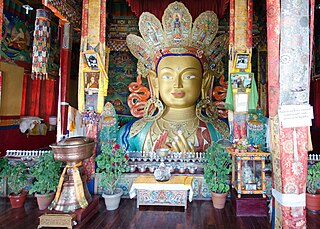
The vast majority of surviving Tibetan art created before the mid-20th century is religious, with the main forms being thangka, paintings on cloth, mostly in a technique described as gouache or distemper, Tibetan Buddhist wall paintings, and small statues in bronze, or large ones in clay, stucco or wood. They were commissioned by religious establishments or by pious individuals for use within the practice of Tibetan Buddhism and were manufactured in large workshops by monks and lay artists, who are mostly unknown. Various types of religious objects, such as the phurba or ritual dagger, are finely made and lavishly decorated. Secular objects, in particular jewellery and textiles, were also made, with Chinese influences strong in the latter.
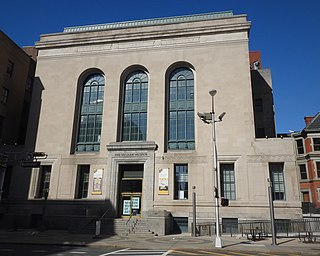
The Newark Museum of Art, formerly known as the Newark Museum, in Newark, Essex County, New Jersey is the state's largest museum. It holds major collections of American art, decorative arts, contemporary art, and arts of Asia, Africa, the Americas, and the ancient world. Its extensive collections of American art include works by Hiram Powers, Thomas Cole, John Singer Sargent, Albert Bierstadt, Frederick Church, Childe Hassam, Mary Cassatt, Edward Hopper, Georgia O'Keeffe, Joseph Stella, Tony Smith and Frank Stella.

A thangka is a Tibetan Buddhist painting on cotton, silk appliqué, usually depicting a Buddhist deity, scene, or mandala. Thangkas are traditionally kept unframed and rolled up when not on display, mounted on a textile backing somewhat in the style of Chinese scroll paintings, with a further silk cover on the front. So treated, thangkas can last a long time, but because of their delicate nature, they have to be kept in dry places where moisture will not affect the quality of the silk. Most thangkas are relatively small, comparable in size to a Western half-length portrait, but some are extremely large, several metres in each dimension; these were designed to be displayed, typically for very brief periods on a monastery wall, as part of religious festivals. Most thangkas were intended for personal meditation or instruction of monastic students. They often have elaborate compositions including many very small figures. A central deity is often surrounded by other identified figures in a symmetrical composition. Narrative scenes are less common, but do appear.
Mid-Island is frequently applied to a series of neighborhoods within the New York City borough of Staten Island.
Lighthouse Hill is the name of a hill, and the neighborhood situated thereon, in the New York City borough of Staten Island. Lighthouse Hill is situated to the north of Richmondtown, south of Todt Hill, and west of Grant City.
Egbertville is the name of a neighborhood located immediately inland from, but classifiable within, the East Shore of the borough of Staten Island in New York City. Originally named Stony Brook as the island's first county seat, then renamed after a family that owned a farm there in the 18th century, Egbertville was known for a time as Morgan's Corner, from 1838. Soon after this, many Irish families arrived in the area, leading to its being referred to by such names as Tipperary Corners, New Dublin, and Young Ireland.
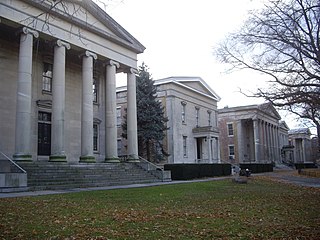
Sailors' Snug Harbor, also known as Sailors Snug Harbor and informally as Snug Harbor, is a collection of architecturally significant 19th-century buildings on Staten Island, New York City. The buildings are set in an 83-acre (34 ha) park along the Kill Van Kull in New Brighton, on the North Shore of Staten Island. Some of the buildings and the grounds are used by arts organizations under the umbrella of the Snug Harbor Cultural Center and Botanical Garden.

The Rubin Museum of Art, also known as the Rubin Museum, is dedicated to the collection, display, and preservation of the art and cultures of the Himalayas, the Indian subcontinent, Central Asia and other regions within Eurasia, with a permanent collection focused particularly on Tibetan art. The museum opened in 2004 at 150 West 17th Street between the Avenue of the Americas and Seventh Avenue in the Chelsea neighborhood of Manhattan in New York City. It announced the closure of its New York City building in October 2024, to become a global museum, focusing on traveling exhibitions, long-term loans, partnerships, and digital resources. The museum closed on October 6, 2024.
Tibetology refers to the study of things related to Tibet, including its history, religion, language, culture, politics and the collection of Tibetan articles of historical, cultural and religious significance. The last may mean a collection of Tibetan statues, shrines, Buddhist icons and holy scripts, Thangka embroideries, paintings and tapestries, jewellery, masks and other objects of fine Tibetan art and craftsmanship.
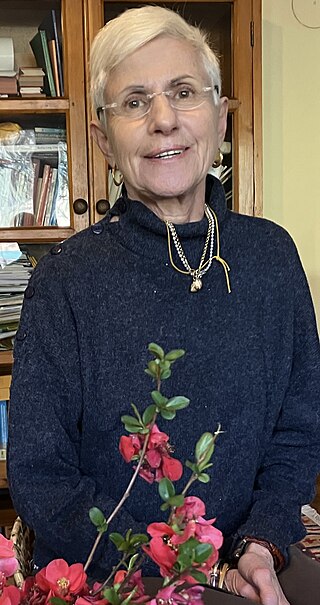
Françoise Pommaret is a French ethno-historian and Tibetologist.
Amy Heller is an American Tibetologist and art historian.
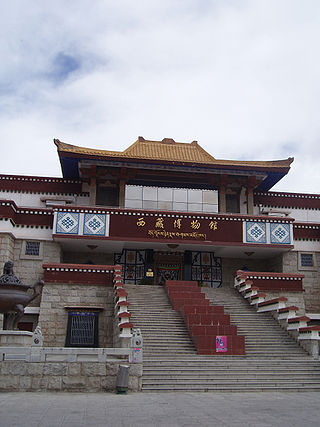
The Tibet Museum is the official museum of the Tibet Autonomous Region of China in Lhasa. Inaugurated on October 5, 1999, it is the first large, modern museum in the Tibet Autonomous Region. It has a collection of more than 520,000 artifacts, including pottery, jade, and Buddha statues, attracting hundreds of thousands of visitors every year. It has a collection of around 1,000 artifacts permanently on display related to the cultural history of Tibet, from examples of Tibetan art to architectural design throughout history such as Tibetan doors and beams. In order to fill the museum the Tibet aristocracy and religious establishment had their property confiscated by the Chinese Government.
The New York Tattoo Museum was a museum located at 203 Old Town Road in Staten Island's Old Town neighborhood above Dozer's shop. It was reported to be the first tattoo museum to open in New York City and housed mannequins displaying tattoo techniques, and other items from Dozer's collection. As of 2014, the museum was reported to have relocated to Medford, New York. and by 2017 it was reported to have closed.
Deborah Klimburg-Salter is an art historian and emeritus professor for non-European art history at the Department of Art History of the University of Vienna. She was also director of the research platform Center for Research and Documentation of Inner and South Asia (CIRDIS). Currently she directs the project "Cultural Formation and Transformation: Shahi Art and Architecture from Afghanistan to the Western Frontier at the Dawn of the Islamic Era" financed by the Austrian Science Fund (FWF) and dedicated to transdisciplinary research.
Jeff Watt is a scholar and curator of Himalayan and Tibetan Art and well known translator of Tibetan texts.

Sonam Dolma Brauen is a Tibetan-Swiss contemporary painter and sculptor.
This is a timeline of Staten Island.

Tibet House US (THUS) is a Tibetan cultural preservation and education 501(c)(3) nonprofit founded in 1987 in New York City by a group of Westerners after the Fourteenth Dalai Lama, Tenzin Gyatso, expressed his wish to establish a cultural institution to build awareness of Tibetan culture.
Christine Osinski is an American photographer. Osinski was born in Chicago, Illinois and was educated at the Art Institute of Chicago, and received a M.F.A. degree from Yale University. Osinski is noted for her photographs of Staten Island in the 1980s.














